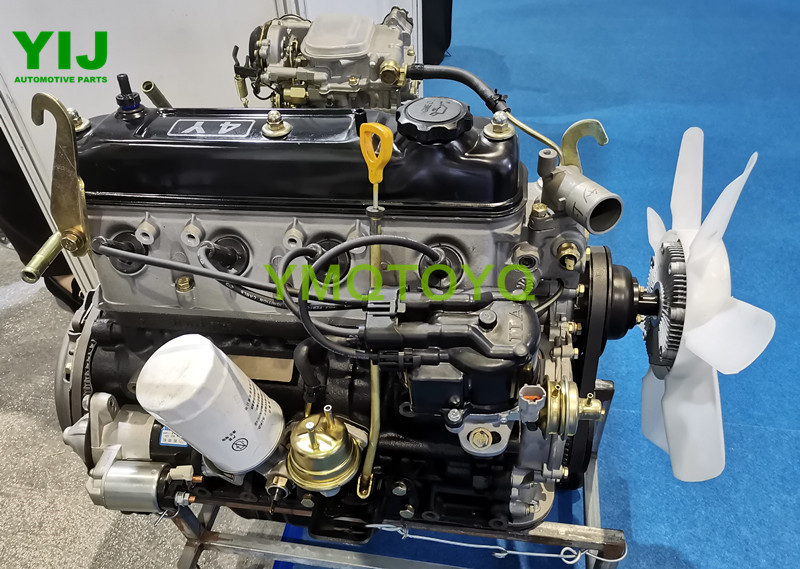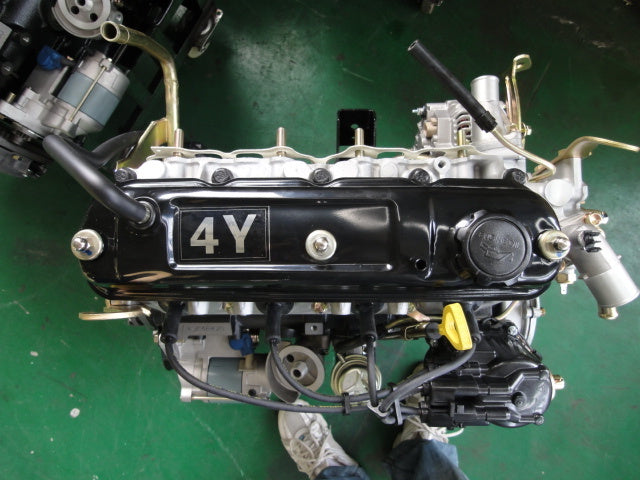How the 4Y Engine Compares to Other Engines in Terms of Fuel Efficiency
How the 4Y Engine Compares to Other Engines in Terms of Fuel Efficiency
Blog Article
Why the Engine Is the very best Selection for Efficiency and Efficiency in Your Vehicle
The engine continues to be a pivotal element in automotive style, mostly due to its significant impact on both efficiency and effectiveness. As innovations in innovation allow smaller engines to deliver amazing power while optimizing gas economic climate, the combination of functions such as turbocharging and hybrid systems comes to be progressively vital.
Recognizing Engine Kind
Comprehending the different kinds of engines is vital for optimizing efficiency and effectiveness in vehicle design. The main engine kinds include inner combustion engines (ICE), electric engines, and hybrid systems, each offering distinctive benefits and restrictions.
Interior burning engines, which can be additional classified right into fuel and diesel variants, count on the burning of fuel to produce power. Gas engines typically provide greater RPMs and far better acceleration, while diesel motor are understood for their torque and fuel performance, making them suitable for durable applications.
Electric engines, on the other hand, utilize electrical motors powered by batteries or gas cells. They provide immediate torque distribution, leading to smooth acceleration and reduced emissions. The efficiency of electric engines is substantially higher than that of ICEs, making them a prominent selection for eco-conscious customers.
Hybrid systems incorporate both internal burning and electric engines, leveraging the staminas of both modern technologies. They enhance gas intake by utilizing electrical power at reduced speeds and switching to gas or diesel for greater rates or larger tons.
Selecting the ideal engine type is important for achieving preferred efficiency metrics and environmental sustainability in contemporary automobile design.
The Influence of Engine Size
Engine size often plays a crucial role in figuring out an automobile's performance and effectiveness. Generally measured in liters or cubic centimeters, engine dimension straight affects the power outcome and torque attributes of a car.
Nevertheless, boosted engine size frequently correlates with decreased fuel effectiveness. Smaller sized engines can deliver sufficient performance for day-to-day driving while advertising much better performance, making them a popular option in small and mid-size automobiles.
Furthermore, developments in engine layout, such as turbocharging and straight fuel injection, permit smaller engines to achieve power degrees comparable to their larger equivalents. This trend highlights the relevance of not solely concentrating on engine dimension but likewise considering general car style and technology (4y engine). Eventually, the effect of engine size on efficiency and efficiency highlights the requirement for customers to analyze their details driving requirements and choices when choosing a vehicle
Advanced Engine Technologies
Technologies in engine technologies have significantly reshaped the landscape of automotive performance and performance, building upon the fundamental principles developed by engine dimension. Especially, improvements such as turbocharging and direct gas injection have actually enabled smaller sized engines to provide power levels previously connected with larger counterparts. Turbochargers press air going into the engine, allowing for enhanced power output without a matching boost in engine size, while straight shot maximizes fuel delivery, boosting burning efficiency.
Additionally, variable shutoff timing systems have actually become an essential modern technology, allowing engines to readjust valve procedure based upon driving conditions. This flexibility improves both performance during acceleration and fuel performance during travelling. Hybrid and electric engine technologies even more show the shift in automobile layout, integrating typical internal combustion engines with electric motors to maximize efficiency while reducing discharges.
In addition, innovations in materials science have led to lighter, much more durable engine components, better improving efficiency and longevity. The assimilation of sophisticated electronic devices and engine control devices also enables real-time adjustments, ensuring ideal performance throughout different problems. Jointly, these innovative engine innovations not only enhance lorry efficiency but likewise add to a much more sustainable vehicle future, demonstrating the continuous development of engine layout.
Harmonizing Power and Performance
Striking an equilibrium in between power and effectiveness is crucial in modern-day vehicle layout as makers look for to satisfy increasingly strict exhausts regulations while satisfying customer demand for performance (4y engine). The difficulty hinges on maximizing engine characteristics to provide robust power outcome without giving up fuel economic situation
To attain this balance, designers utilize various strategies, such as turbocharging, which improves engine power by compeling in even more air, enabling a smaller engine displacement that enhances gas performance. Variable shutoff timing innovations likewise play a significant role, enabling engines to readjust their performance attributes based on driving conditions, therefore enhancing both power and efficiency.
Furthermore, advancements in products and manufacturing methods have caused lighter engine components, which minimize total car weight and improve gas effectiveness without endangering power. Hybrid technologies have also become a practical solution, incorporating typical internal burning engines with electric powertrains to give a boost in efficiency while maintaining lower exhausts.

Future Patterns in Engine Style

Additionally, the advancement of sophisticated products, such as lightweight composites and high-strength alloys, is readied to reinvent engine parts. These materials not only lower weight but additionally improve thermal performance, thus maximizing performance. Additionally, suppliers are discovering variable compression ratios, allowing engines to adapt to different driving conditions, improving both power outcome and gas economic situation.
Even more, the rise of expert system and artificial intelligence in engine layout is making it possible for predictive maintenance and real-time efficiency optimization. This innovation can bring about engines that self-adjust for optimal performance based upon driving patterns.

Final Thought
In conclusion, the engine serves as an essential part in attaining ideal performance and efficiency in modern-day lorries. The interaction in between engine size and style proceeds to evolve, driving advancements that balance thrilling performance with ecological sustainability.
In addition, innovations in engine design, such as turbocharging and direct fuel injection, allow smaller engines to achieve power degrees comparable to their larger equivalents.Innovations in engine modern More Info technologies have significantly improved the landscape of auto performance and efficiency, structure upon the foundational ideas developed by engine dimension. Turbochargers compress air entering the engine, allowing for enhanced power output without a corresponding rise in engine dimension, while direct injection optimizes gas shipment, improving combustion effectiveness.
Hybrid and electrical engine technologies even more illustrate the change this link in vehicle style, incorporating conventional inner combustion engines with electric motors to take full advantage of performance while minimizing discharges.
Collectively, these advanced engine modern technologies not only enhance automobile performance but also contribute to an extra lasting automobile future, showing the recurring evolution of engine design. (4y engine)
Report this page